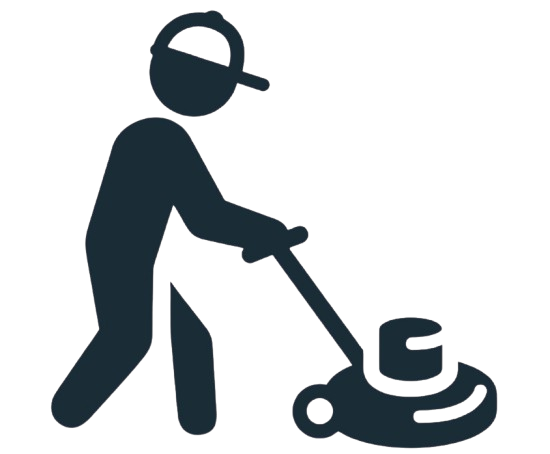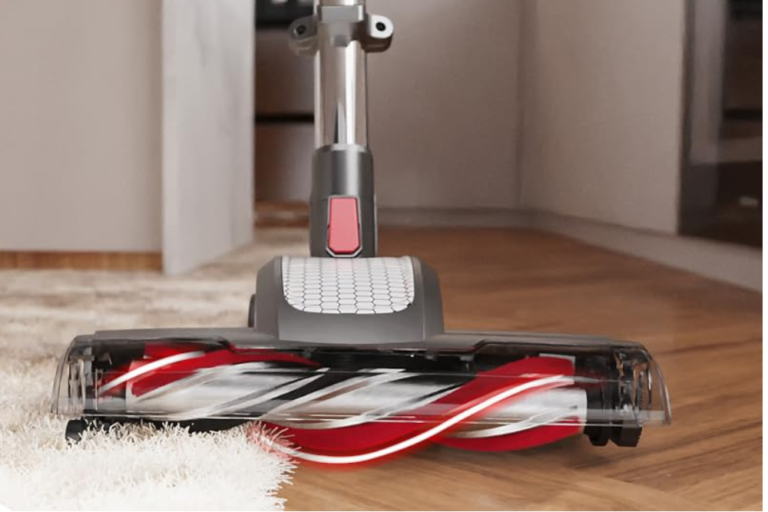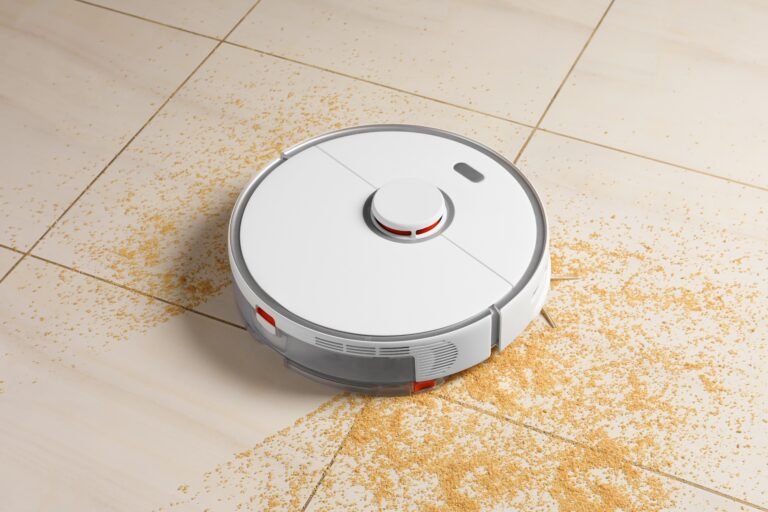Engineered wood floors are a popular choice among homeowners for their beauty, durability, and versatility. Made by layering thin sheets of wood (known as veneers) over a base of high-quality plywood or fiberboard, engineered wood flooring is more stable and moisture-resistant than solid hardwood, making it suitable for various rooms in the home, including those prone to temperature and humidity changes.
However, engineered wood flooring is not impervious to wear and tear, and improper cleaning can damage the finish, leading to dullness, scratches, or even warping over time. Understanding how to clean and maintain engineered wood floors properly is crucial for keeping them in pristine condition and extending their life. This guide will walk you through the essential tools, techniques, and tips for cleaning engineered wood floors without compromising the finish.
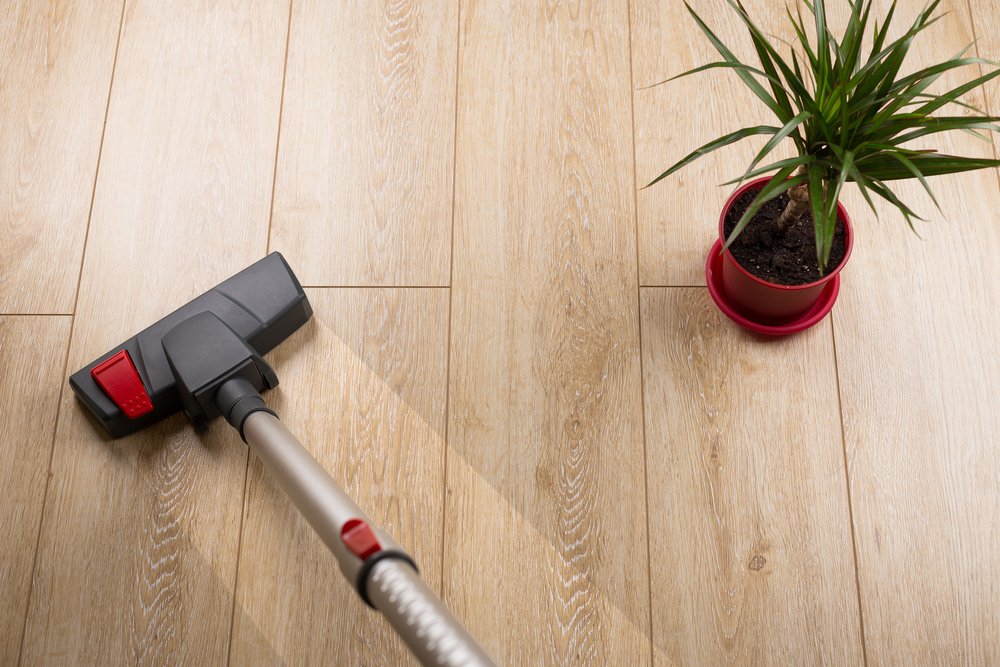
Required Tools To Clean Engineered Wood Floors
Before we dive into the tips, it’s essential to have the right tools. High-quality tools can make all the difference, allowing you to maintain your engineered floors efficiently and effectively. Here’s a list of must-have tools for engineered wood floor maintenance:
1. Microfiber Dust Mop or Dry Mop
These tools are crucial for removing dust and debris without scratching the wood. Microfiber mop is gentle on wood surfaces and picks up fine particles that might scratch or dull the floor.

2. Vacuum With Hardwood Floor Attachment
A vacuum cleaner equipped with an engineered floor setting or attachment can help remove dirt from hard-to-reach areas, like corners and crevices. Avoid vacuums with beater bars, as they can scratch the surface.

3. Soft-Bristled Broom
For quick, daily cleanups, a soft-bristled broom is ideal for sweeping away dust and pet hair. Opt for a broom that won’t leave behind scratches.
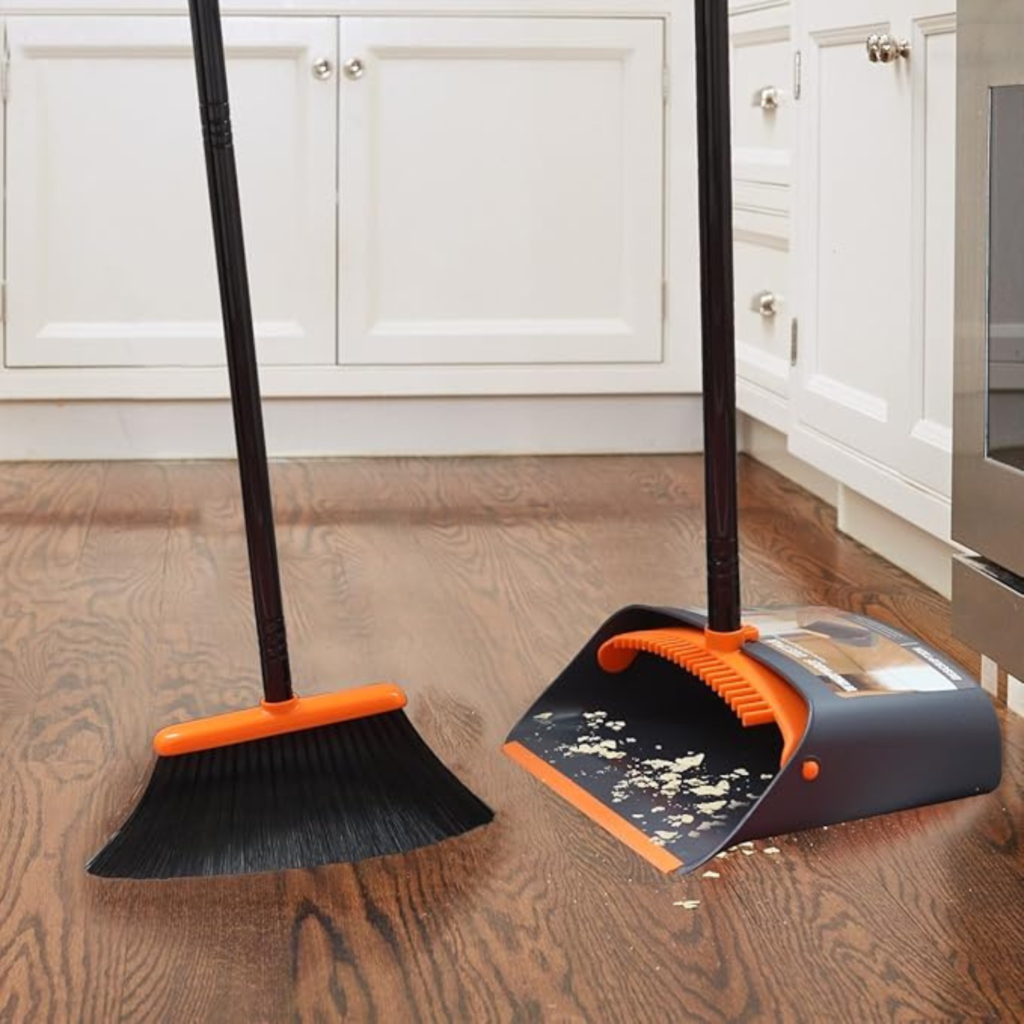
4. Microfiber Cleaning Pads
These microfiber cleaning pads are handy for mopping and cleaning wood floors, as they can be washed and reused multiple times.
5. Wood Floor Cleaner
Select a high-quality, pH-neutral wood floor cleaner free of wax and oil. Avoid harsh chemicals, as they can damage the finish over time.
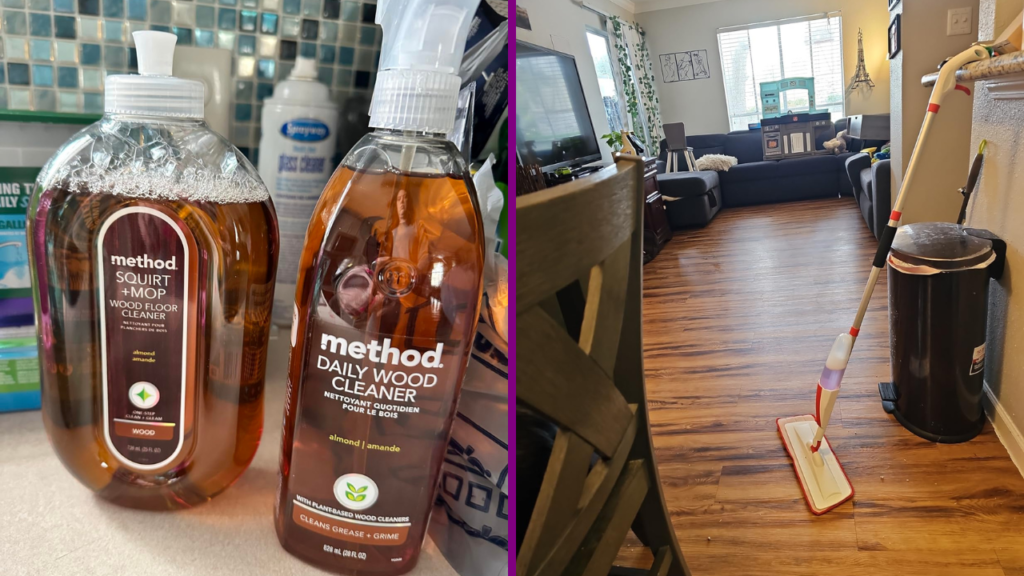
6. Spray Bottle
A spray bottle helps you control the cleaning solution applied to the floor, preventing over-saturation that could harm the wood.

7. Protective Pads for Furniture
Furniture pads protect your floor from scratches caused by moving or shifting furniture. They’re easy to attach and help prevent damage from everyday movements.
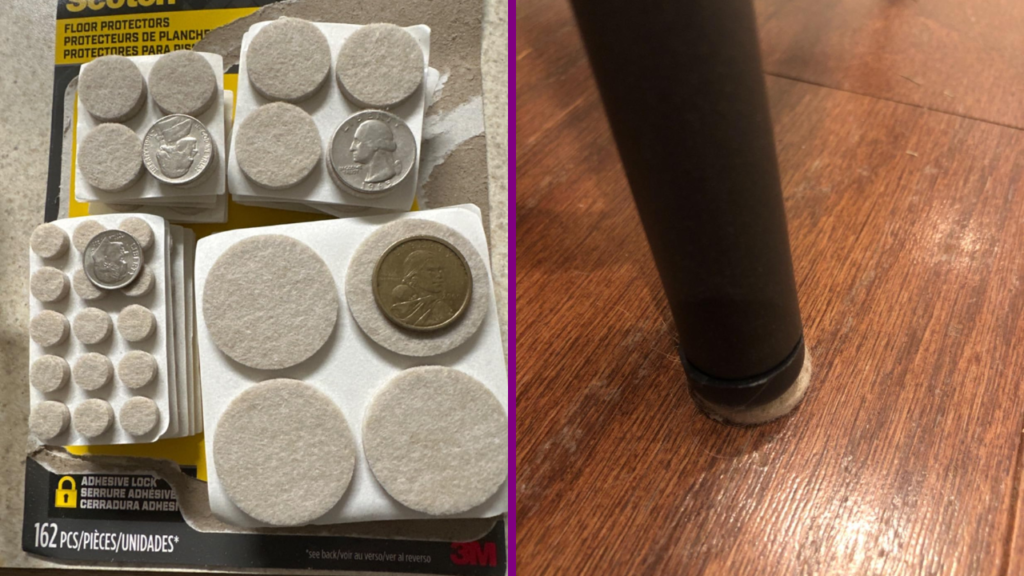
8. Rug Pads
Place rug pads under area rugs to reduce wear and tear in high-traffic areas. Ensure they’re designed for wood floors to avoid discoloration.
9. Polish or Refinishing Solution
For periodic maintenance, a high-quality wood floor polish or refinishing solution can restore shine and protect the floor.
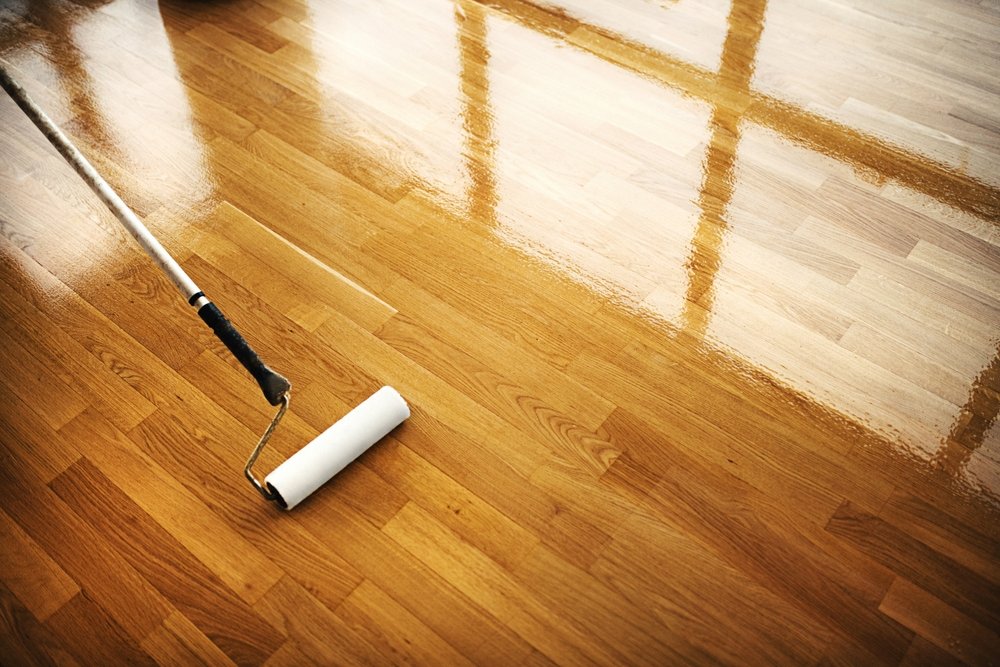
10. Bucket and Water
When mopping, use a bucket to rinse out cleaning pads and prevent dirt from being spread back onto the engineered wood floor.
These tools allow you to preserve and protect your engineered wood floors. Now, let’s explore the maintenance tips to keep them looking pristine.
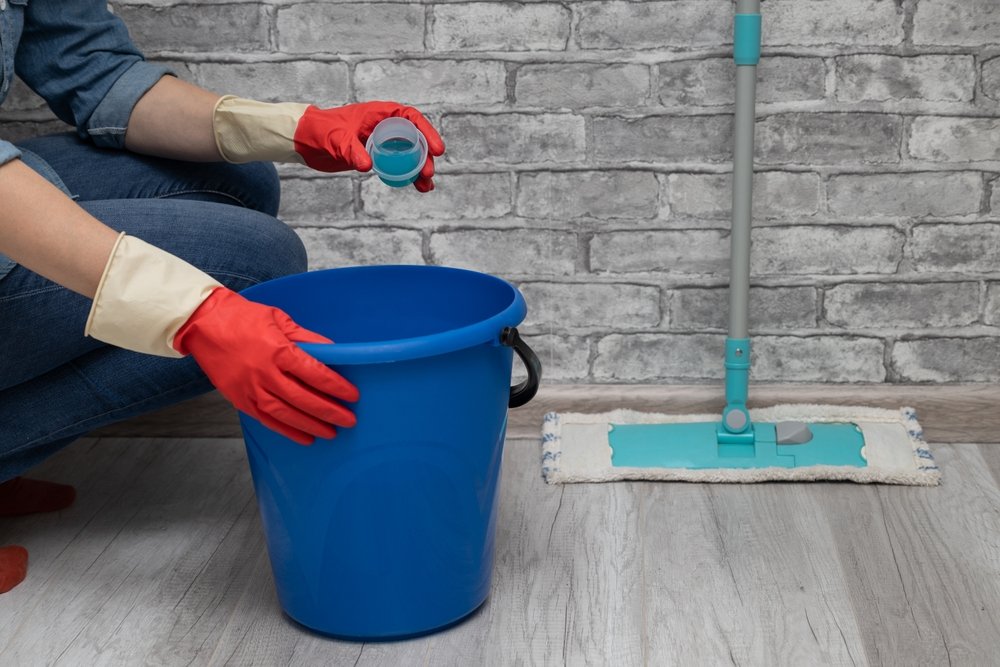
Step-by-Step Guide: How to Clean Engineered Wood Floors
1. Dust and Sweep Regularly
Engineered wood floors are best maintained with frequent dusting and sweeping to prevent dirt and debris from settling in and scratching the surface. Use a dust mop or a soft-bristled broom to sweep up any visible dirt, dust, and pet hair, ensuring the mop or broom head is clean. For optimal results, follow these tips:
- Sweep toward the wood grain to gather dust along the grooves.
- Avoid using a straw broom, as these can be too rough and may scratch the surface.
- Vacuuming with a hardwood floor attachment can also be beneficial for quickly removing larger particles.
Frequency: It’s recommended to dust and sweep engineered wood floors daily or every other day, especially in high-traffic areas like hallways, kitchens, and entryways.

2. Vacuum Weekly
While dust mopping is essential for daily maintenance, vacuuming is helpful for deeper cleaning and reaching places that broom and mops might miss. A vacuum with a hardwood-friendly attachment will allow you to capture hidden dirt and debris, especially around furniture legs and corners. Avoid using the beater bar or rotating brush head, which can scratch the engineered wood floor.
- Set the vacuum cleaner to the hardwood mode or use the hardwood floor attachment.
- Use a handheld vacuum for smaller, hard-to-reach areas.
- Move furniture gently to vacuum underneath if necessary, avoiding any dragging.
Frequency: Use a Good vacuum cleaner and Vacuum once a week to maintain a spotless floor and prevent dust buildup.
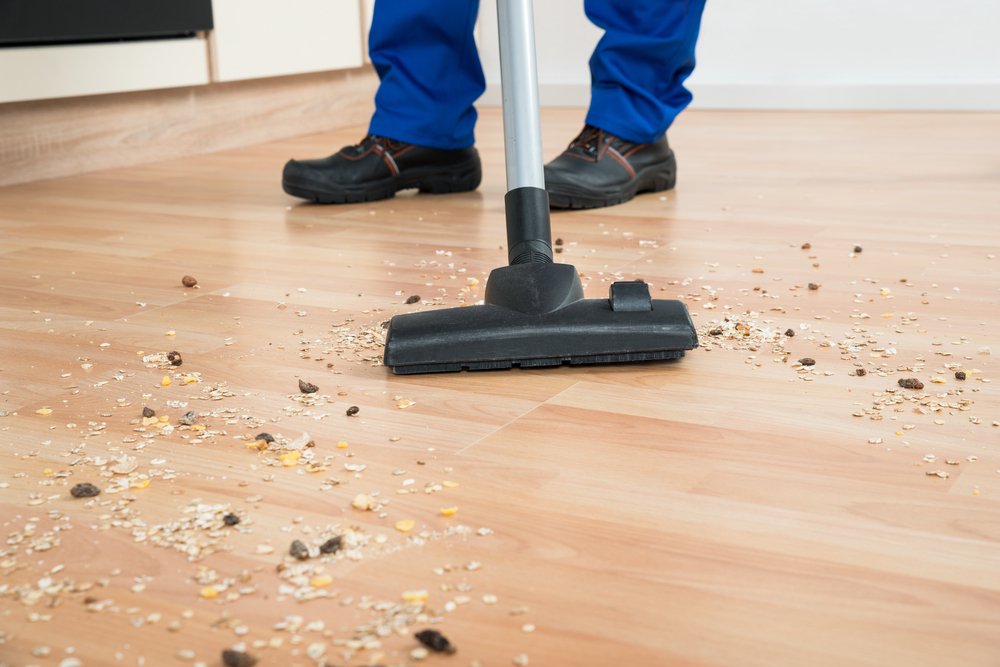
3. Damp Mop for Deeper Cleaning
A damp mop can be used for a deeper cleaning session to remove accumulated grime or stuck-on dirt. However, excessive moisture can damage engineered wood floors, so it’s crucial to ensure that the mop is only slightly damp. Here’s how to do it properly:
- Prepare a solution using a pH-neutral wood floor cleaner and water. Follow the cleaner’s instructions carefully.
- Dip the microfiber mop or cloth into the solution and wring it thoroughly until damp.
- Mop in the direction of the grain, being mindful not to soak the floor.
- Dry the area with a clean, dry towel or cloth to absorb any residual moisture.
Pro Tips for Damp Mopping:
- Test the cleaner on a small, inconspicuous area first to ensure it won’t damage the finish.
- Avoid steam mops, as the high heat and moisture can cause warping or fading in engineered wood.
Frequency: Depending on foot traffic, deep cleaning with a damp mop can be done monthly or every 2-3 months.
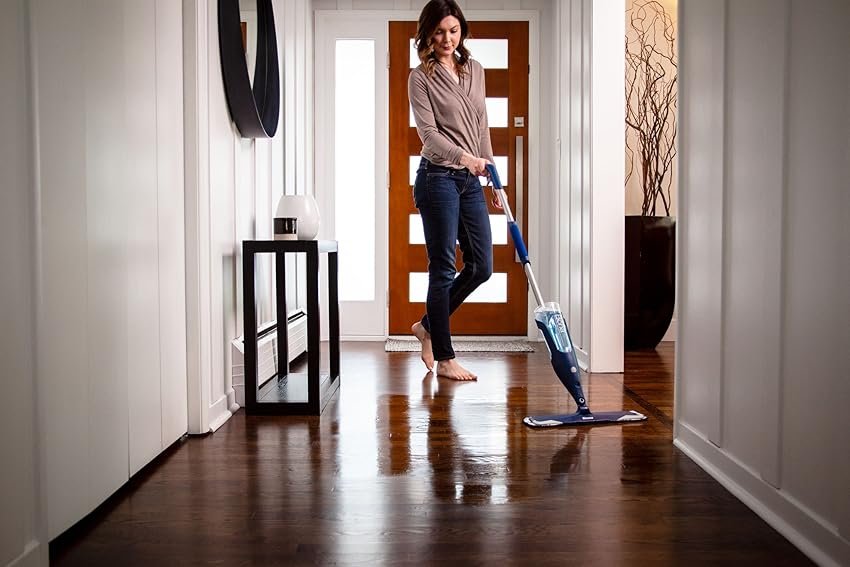
4. Spot-Clean Spills Immediately
Engineered wood floors are more moisture-resistant than solid wood, but they’re still vulnerable to water damage. Spills should be addressed immediately to prevent water or other liquids from seeping into the seams, which could cause swelling or warping. Here’s a simple approach to spot cleaning:
- Blot the spill with a soft, absorbent cloth or paper towel, avoiding any scrubbing.
- Use a small amount of wood floor cleaner on a soft cloth, then blot dry immediately.
Frequency: Spot-clean spills as they occur to prevent staining or moisture damage.

5. Polishing to Restore Shine (Optional)
Engineered wood floors typically have a durable finish, but after years of use, the shine can diminish. If the floor starts looking dull, consider using a wood floor polish compatible with engineered wood. Polishing can help restore a glossy finish and protect the surface from scratches.
- Clean the floor thoroughly before applying polish.
- Follow the product’s instructions, applying the polish with a microfiber mop.
- Allow the floor to dry completely before walking on it.
Frequency: Polishing should only be done as needed, typically once or twice a year.
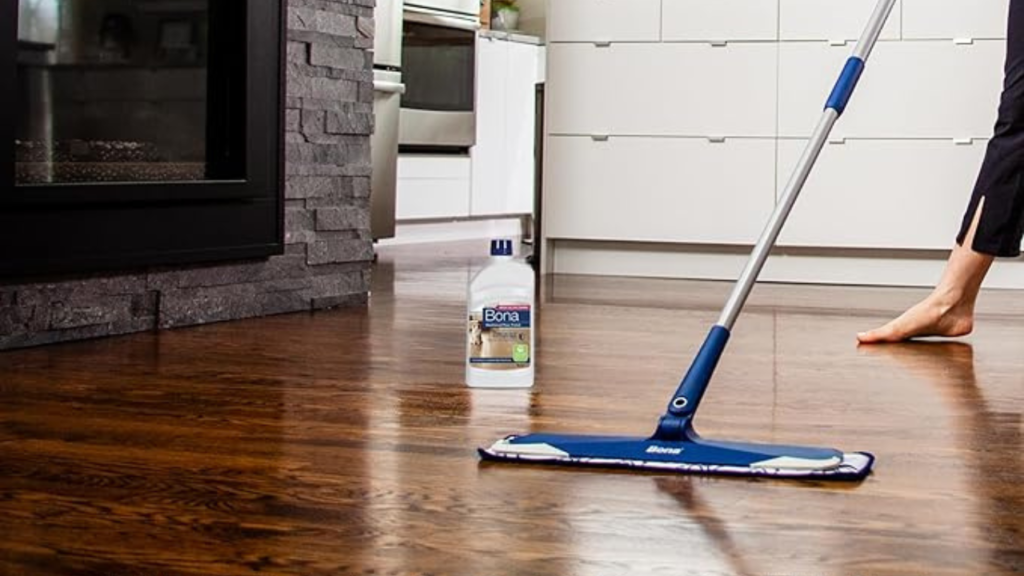
Tips for Maintaining Engineered Wood Floors
- Control Humidity Levels:
Engineered wood is more stable than solid wood but can still be sensitive to extreme humidity changes. Keep indoor humidity levels between 35-55% to prevent expansion or contraction. - Avoid High Heels and Sharp Objects:
Sharp objects and high heels can cause dents and scratches. Encourage family members and guests to remove their shoes before walking on the floor. - Use Rugs and Mats in High-Traffic Areas:
Placing rugs and mats in entryways, hallways, and near sinks can help reduce wear and tear. Choose mats that won’t trap moisture or scratch the floor. - Lift, Don’t Drag Furniture:
When moving furniture, lift it rather than dragging it across the floor to prevent scuff marks and scratches. - Trim Pet Nails Regularly:
If you have pets, trim their nails to avoid accidental scratches on the floor’s surface. - Limit Sun Exposure:
Sunlight can fade and discolor engineered wood. In areas that receive direct sunlight, use curtains or blinds to protect the floor.

Common Mistakes to Avoid
When cleaning engineered wood floors, avoid these common mistakes to preserve the floor’s finish:
- Using Vinegar or Ammonia-Based Cleaners
Although vinegar is commonly recommended for cleaning, it is too acidic for wood floors and can erode the finish over time. - Soaking the Floor with Water
Too much water can lead to warping or swelling. Always use a damp mop, not a wet one. - Using Wax or Oil-Based Cleaners
Wax and oil-based cleaners can create a slippery surface and leave a residue, making it difficult to refinish in the future if needed. - Scrubbing Stains Aggressively
Scrubbing can scratch and damage the protective layer on engineered wood. Instead, gently blot spills and stains. - Not Using a Rug Pad Under Rugs
Some rug backings can trap moisture or be too rough on wood. Opt for rug pads designed for use on hardwood or engineered wood floors.
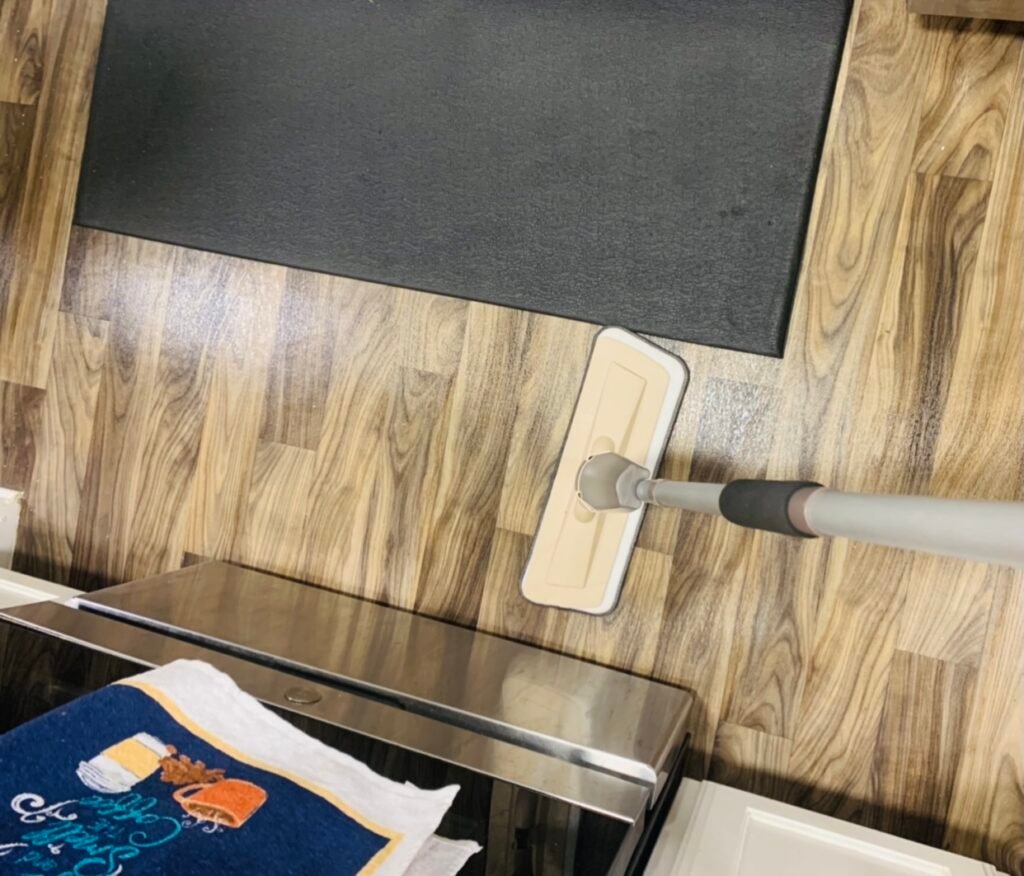
Conclusion
Maintaining engineered wood floors doesn’t need to be complex, but it does require some care and the right approach. Following these guidelines, you can keep your floors looking as beautiful as the day they were installed. Regular dusting, gentle mopping, and prompt spill cleanup will go a long way in preserving the finish and ensuring the floor remains a striking feature in your home for years to come.
